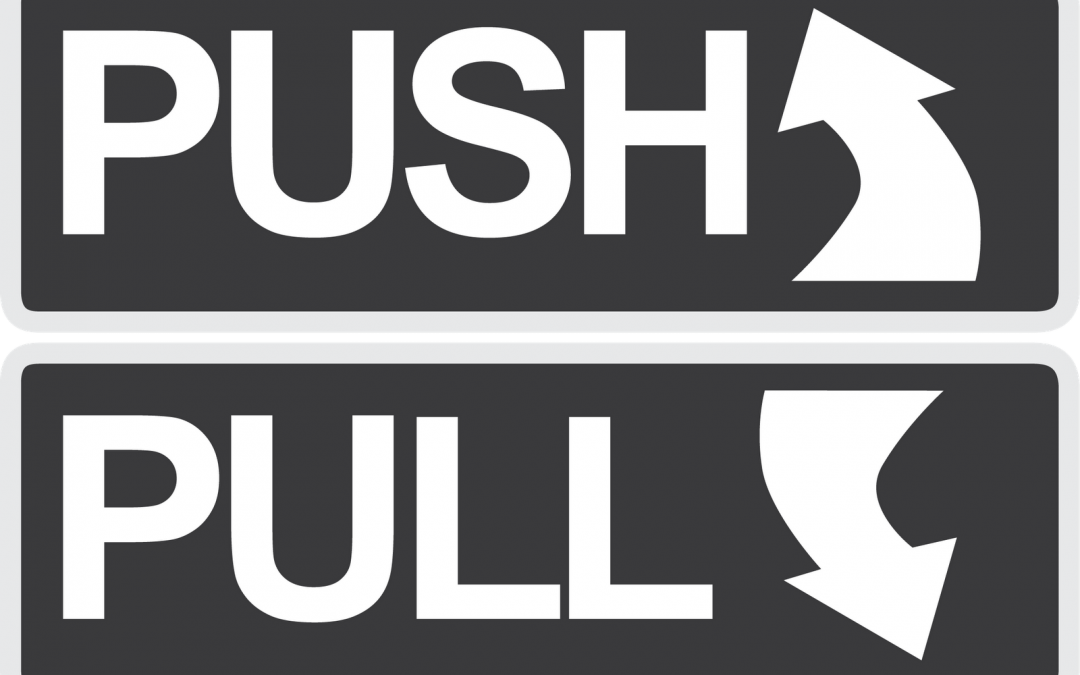Great organizations excel in creating the philosophy that their people “can do” (possess the capability), “will do” (maintain their commitment), and “must do” (have the right alignment) that is required for success, now and into the future. To put it in different words, when talented people are trained and “nourished” to excel in their work, when they are provided a rich, engaging environment in which there is passion and excitement about doing great work and truly making a difference, and when they perceive a connection and alignment between their work and the realization of organizational goals and metrics—great things happen (e.g. individual and team excellence). We call this “Pull Magic”—where employees are passionate about being “pulled” in a direction of individual and organizational greatness. This is the foundation for talent management practices that have a significant effect on the organization’s bottom line.
Do Your Sales Managers and Your Organization:
- Understand expectations and goals?
- Understand actions need to meet expectations and accomplish goals?
- Possesses the abilities and personal qualities required to meet expectations
- Motivate employees to meet expectations; e.g. Do they personally value the perceived benefits of meeting expectations and achieving goals?
- Empower and enable employees to meet expectation; e.g. mitigate organizational and external obstacles; resources made available, etc.?
If the answer is no to more than 1 of these questions, perhaps your organization would benefit from shifting its leadership focus to Pull versus Push.
| PULL ADVANTAGES | PUSH DOWNSIDES |
| Employees & Managers are COMMITTED | Employees ARE OBSTACLES to achieving goals |
| Employees & Managers are PART OF PROBLEM SOLVING PROCESS | Employees DO NOT PERCEIVE PERSONAL BENEFIT |
| Employees and Managers UNDERSTAND NEED AND VALUE OF CHANGE | Employees DO NOT UNDERSTAND IMPACT OF ACTIVITIES OR ACTIONS NEEDED |
Unfortunately many sales organizations, achieve the opposite because they haven’t created this type of environment. In the absence of pull strategies, they resort to “Push” strategies, where people perceive being “pushed” in a direction most likely to benefit the organization − not the individual. Where push strategies are the dominant approach to driving organizational results tend to experience greater employee dissatisfaction, higher turnover, shrinking talent recruitment pools, and higher employee disengagement. Sales people are quick to lose sight of the relationship between their efforts and the organization’s success. Push strategies facilitate the growth of organizational climates characterized by a division between management and sales people and they begin to feel disconnected. A kind of “outcome myopia” emerges where decisions about discretionary effort and levels of engagement are based on what individuals perceive as good for themselves personally, effectively disregarding what is good for organizational success overall. Push strategies can encourage sales people to perceive management as a primary obstacle to the successful execution of their jobs, and they foster the belief that their interests are in direct conflict with management’s. They view their work environment as “Us v. Them”, with “us” being the sales people, and “them” being management (most often expressed as “senior” management due to the fact that responsibility for managerial decisions often bypasses regional sales management, as those managers develop working rapport with their teams by “siding” with their teams on unpleasant or unpopular senior leadership decisions). The greater the push, the more visible the distinction becomes. And it doesn’t stop there. Push strategies quickly become self-perpetuating cycles. Because push strategies create employee resistance, management finds itself in the unpleasant position of having to “push” harder and harder to drive organizational results. And of course that leads to more resistance, which leads to more “push,” etc. Ultimately, that cycle has to be broken, and it can only be broken by the kind of intense commitment to improving talent leadership which will result in “pull” rather than “push.”
In summary, sales leaders must break a cycle of internal focus and move towards an organization that is committed and focused to achieve a world-class sales organization productivity. The quickest way to do this is by incorporating some of the “Pull” techniques described above.
Related Resource: Leadership Development – Big Questions Answered

 Dr. Jaffee (M.A., Ph.D.) is a recognized expert in the field of assessments, and has created effective HR Solutions used by millions of people.
Dr. Jaffee (M.A., Ph.D.) is a recognized expert in the field of assessments, and has created effective HR Solutions used by millions of people.